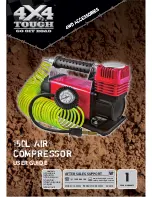
Operation Manual / TPL65-A32 / -A33 / -A36 + TPL69-A32 / -A33
Maintenance
5
Cleaning turbine blades and nozzle ring
in operation
5.4
Page 59
Sept
em
be
r 2
014
H
ZT
L24
98_
EN
R
ev
is
ion A
Cleaning turbine blades and nozzle ring in
operation
5.4
The combustion of heavy fuel oil in diesel engines leaves dirty deposits on
the turbocharger turbine blades and nozzle rings. These deposits on the
turbine components are caused by the following products of combustion:
Soot
Molten ash
Cinders
Incompletely burned fuel
Sodium vanadyl vanadate
It is therefore an advantage if fuels are used which have a low content of
ash, sulphur, sodium and vanadium. The fuel, furthermore, must also be
stored, prepared and handled correctly.
NOTICE
We recommend the use of fuels with a mass ratio of vanadium to
sodium less than 3:1, so that the melting point of the sodium vanadyl
vanadate is as high as possible.
The dirty deposits increase with time so that regular and proper cleaning
is important to remove what has accumulated.
The charging pressure can rise somewhat if the turbine cross-section is
reduced by dirty turbine components. The dirty deposits cause a drop in
turbine efficiency and a rise in engine temperatures after the cylinders.
This may mean that the engine output has to be reduced.
In addition, a dirty turbine results in rotor unbalance. Heavy deposits of
dirt can lead to unacceptably high rotor imbalance.
Experience with turbocharger operation shows that, despite periodic
cleaning while the installation is running, overhauls during which turbine
and nozzle ring are cleaned mechanically cannot be dispensed with. If
cleaning is carried out correctly and the cleaning system is properly sized,
however, the intervals between overhauls can be extended.
5.4
© Copyright 2014 ABB. All rights reserved.
















































